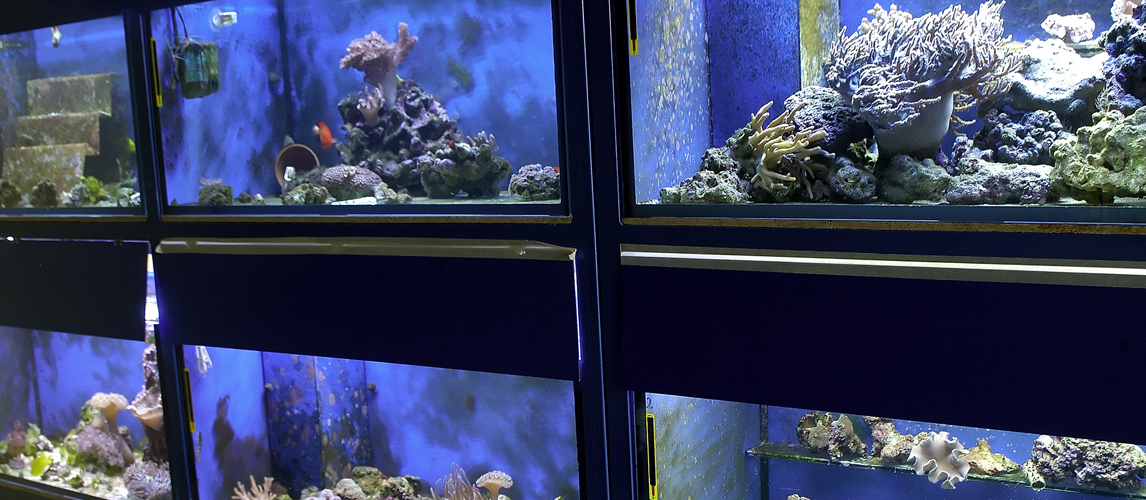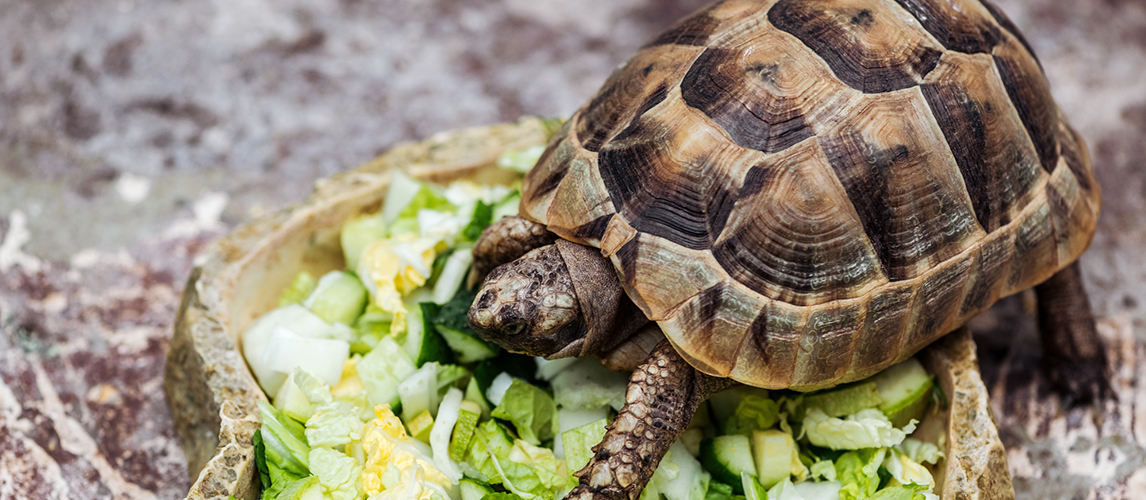According to the USDA, turtle ownership is on the rise. Since at least 2001, more and more of us have been choosing these exotic, scaly friends over their conventional counterparts, cats and dogs. Although aquatic turtles are smaller than your average pet, they require just as much – if not more – care and attention. Unfortunately, they don’t always get it.
The majority of health problems that domestic turtles suffer from are the result of improper feeding and hygiene practices. Many new owners underestimate just how much care and commitment it takes to ensure their turtle has a healthy, happy life.
If you want to adopt a turtle, this warning may seem daunting, but we can’t emphasise enough how important it is to thoroughly prepare for your new pet. That’s where this guide comes in – below, we discuss how to properly care for these fascinating animals, from feeding, to grooming, to recognizing health issues. Armed with this information, you’ll be ready to greet a new, shelled friend into the household.
Aquatic Turtles Behavior
The phrase ‘aquatic turtle’ is something of a catch-all, so before we talk behavior, it’s important to clarify which species we’re discussing.
Most US turtle enthusiasts will care for one of the following freshwater species:
- Red Eared Slider
Red Eared Sliders are the most widely sold aquatic turtle in the US. Most juveniles are four inches in length, but they can grow up to a foot. These turtles are named for the distinctive red stripe on either side of their head, and also have yellow stripes or patches on their skin and shell. They’re native to the Southern US and Mexico.
- Painted Turtles
Painted Turtles are smaller than Red Eared Sliders, growing up to 10 inches over their lifetime. They aren’t as hardy either, so may not be the best option for first time owners. Their skin is dark brown or black, patterned with red or yellow lines.
- Cooters
Cooters can grow up to 17 inches in length, placing them among the largest of the common pet species. Their appearance is similar to a Red Eared Slider, but features less decoration, and a higher domed shell. They’re also more partial to a herbivorous diet.
- Map Turtles
The Map is an attractive turtle, with marbled patterning on their bodies and shell. They typically grow up to 12 inches in length, and prefer to live in moving water, like rivers. This peculiarity makes them one of the harder species to care for.
Although each species has its own distinct personality, most turtles exhibit similar behavioral patterns.
- Self-Protection
As we all know, turtles have shells. This unique characteristic not only distinguishes them from other reptiles, it also determines their behavior to some extent. When a turtle feels threatened, they’ll often withdraw into their shell, which acts as a protective layer of armor.
- Hiding
Many turtle species are very shy, and you can expect to find them tucked away in a quiet spot fairly often. Although turtles can be surprisingly sociable, and enjoy human company, they need to relax by themselves from time to time.
- Basking
Turtles are reptiles, and therefore cold-blooded. This means they need to sunbathe in order to keep their bodies at a functional temperature. In a domestic setting, basking in the sun won’t always be an option, and you can expect your turtle to take regular stints underneath their UV or heat lamp. Aquatic turtles usually leave the water to bask, since heat absorption is easier on land. If a basking turtle is startled, they’re likely to jump back into the water to escape the perceived threat.
- Climbing and Exercise
Despite popular misconceptions, turtles require a lot of exercise. In the wild, they would move about to follow the sun, hunt in the water, and travel to and from breeding grounds. Believe it or not, many species of turtle are adept climbers too, and may explore their surroundings by climbing to a vantage point. In captivity, you can expect your turtle to move back and forth from the heat lamp, swim, and explore throughout the day.
- Nesting
When a female turtle is sexually mature she will lay unfertilised eggs, even if a male isn’t present. Thanks to their grippy claws, turtles are good diggers, and prefer to lay these eggs in a nest on land. They’re usually reluctant to drop eggs into the water, so it’s important to provide your turtle with a space for laying. Because it’s difficult to differentiate between male and female turtles, you may not know which sex you have until they start laying eggs.
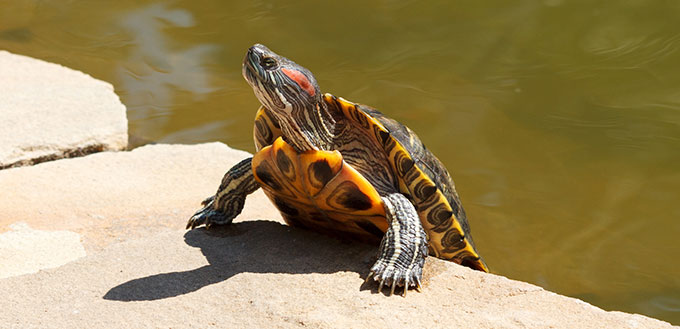
Aquatic Turtles Habitat
In the wild, aquatic turtles spend some of their time on land, and some in the water. It’s important that their homes reflect this. If your turtle doesn’t have enough space to bask and nest, they won’t be able to thrive, and could suffer from certain health problems.
To build the perfect home for your aquatic turtle, you’ll need to consider the following:
Equipment
To house your turtle, you will need:
- Terrarium
- Dry basking area
- Shelter
- Heat lamp with UVA/UVB bulb
- Thermometer
- Water filtration system
- Appropriate plants (optional)
Size
Aquatic turtles love to swim and explore, so it’s important to provide them with ample space to meet these needs. As a rule of thumb, turtles require about 10 gallons of tank space for every inch of their shell length. For instance, the shells of Red Eared Sliders grow to around seven inches, so they’ll need about 70 gallons of tank space. Although your turtle may be very small when you first adopt them, remember to account for their growth – better buy a larger tank now and avoid replacing it in the future.
Water
All aquatic turtles spend at least 50% of their time in the water. To accommodate your new pet, ensure their swimming water is at least twice as deep as their body is long. For example, if your turtle is 7 inches in length, they should have at least 14 inches of water to swim in. This water should be properly filtered and de-chlorinated – we’ll discuss proper water maintenance later on in this guide.
Related Post: Filters for Turtle Tank
Basking Space
As mentioned earlier, turtles are cold-blooded, and require a dry spot in which to bask. You can easily add a basking space to their tank by installing a specially designed platform, or placing an appropriately shaped rock in the water so that it protrudes like an island. Part of this dry space should be constantly heated with a basking (heat) lamp. The space must be large enough to accommodate your turtle, and water bowl – it doesn’t need to be as large as their pool, since aquatic turtles are far less active on land. Make sure the basking area is easily accessible, by having it slope towards the water. If possible, allow your turtle to bask outdoors under supervision, since real sunlight is the best stimulus for vitamin D production.
Temperature
To thrive, turtles must be kept at a consistent temperature. Ideal temperatures vary by species, but most turtles require:
- Air temperatures of 75 – 80 degrees F
- Water temperatures of 72 – 76 degrees F
These temperatures can usually be sustained using a UV lamp, but for larger tanks a submersible water heater may also be necessary. Be sure to place the heater carefully, to prevent your turtle from bumping into it. You can monitor the temperature in the terrarium using basic thermometers.
Related Post: Turtle Tank Heaters
Plants and Substrate
If you choose to decorate your tank with plants, be sure to avoid too much clutter, and remember that your pet may uproot and eat them. Be careful to choose plants that won’t harm your turtle – selecting species native to their natural habitat is a good starting point. Plants will need a substrate to anchor them – gravel and walnut shells are two good options.
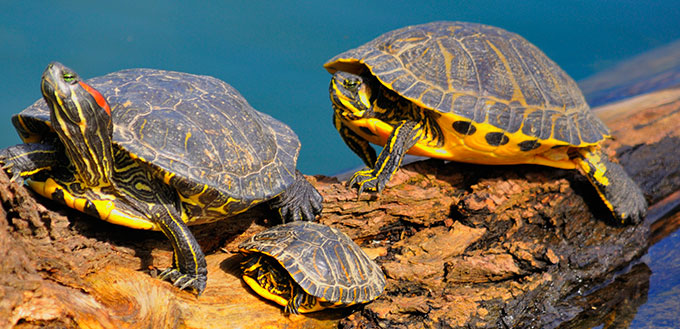
Aquatic Turtles Diet & Nutrition
As you’d expect, different turtle species require slightly different diets, and it’s a good idea to seek advice from a vet or breeder before you bring them home.
Despite these differences, a few feeding traits are common to all aquatic turtles:
- Aquatic turtles must be in the water to eat – this allows them to wash down their food
- Turtles will eat almost anything, so be very careful what you place in their tank
- A monotonous diet may cause your turtle to lose interest in food over time
- Turtles are ‘opportunistic’ feeders in the wild, and are prone to overeating if allowed
- Turtles are messy eaters, and their tanks must be regularly cleaned – some owners prefer to set up a separate feeding tank
Related Post: Turtle Food
As you work out the best diet for your turtle, you should consider the following:
- What to Feed them
Most species of aquatic turtle can be fed specially developed commercial foods, made by companies such as Mazuri, Zoo Med, or Rep-Cal. Manufacturers should clearly state which turtle species their food is suitable for. To avoid monotony, you may wish to alternate between brands.
If you’re feeding a hatchling, you’ll need to buy a different type of food, formulated specifically for this vital life stage. Hatchling foods tend to have a higher protein content, and smaller flakes or pellets than their adult counterparts. All turtle foods made by reputable companies feature the balanced nutrients turtles need for good overall health.
- How much to Feed them
Turtles are small animals, with slow metabolisms. This means they don’t need large volumes of food to thrive, and overfeeding them can cause serious health problems. Each food portion should be roughly the size of your turtle’s head and neck, or the volume they can consume in 15 minutes.
- How Often to Feed them
Turtles don’t need to be fed as often as cats and dogs. Juveniles, aged up to one year old, should be fed once a day, young adults should be fed every other day, and older animals need only be fed once every three days.
Some owners prefer to feed their turtle smaller portions on a daily basis – it’s really up to personal preference. Whichever feeding schedule you select, be careful to avoid overfeeding. Turtles have been known to beg for food, but it’s important to resist their charms if they’re to maintain a healthy weight.
- Treats and Supplements
Along with commercial pet food, it’s a good idea to vary your turtle’s diet with supplementary treats, such as:
- Aquatic plants, like duckweed, water lettuce, or water hyacinth
- Leafy greens such as romaine lettuce or parsley
- Worms
- Crickets
- Small pieces of freshwater shrimp or crayfish
- A calcium ‘dust’ supplement, sprinkled onto their food once or twice a year
Avoid giving your turtle pieces of fruit as a treat, as this can result in diarrhea.
Aquatic Turtles Grooming & Hygiene
Turtles can be a messy bunch, and maintaining good tank hygiene is vital if they’re to achieve a happy, healthy life.
To keep your scaly friend in tip-top condition, you’ll need to clean their tank every month.
You’ll need:
- A temporary container to house your turtle
- A bucket
- Vinegar, bleach, or chlorine
- A scrubbing sponge
- Water conditioner
- Non-iodized salt
Maintain good Hygiene Practices
Turtles carry salmonella, so be sure to thoroughly wash your hands after cleaning. The equipment you use during cleaning should be reserved exclusively for this purpose, too.
- Remove your Turtle
Before you begin cleaning, carefully remove your turtle from their tank and place them in the dedicated container. Fill the container with water and place a large rock inside for the turtle to climb on.
- Remove Equipment and Decorations
Next, switch off all electrical equipment in the tank, such as heaters and lights. Unplug them, and place them somewhere safely out of the way.
Once the electronics are removed, take everything else out of the tank – decorations, basking spot, filter – and place them in the bucket.
- Move the Tank
Carry the tank to your cleaning area (garden or bathroom), with the help of a partner. If the tank is too heavy, bail out some of the water first. Next, drain all of the water.
- Clean the Substrate
If your tank contains a substrate, such as gravel, now is the time to clean it. Use a garden hose or bathtub faucet to fill the tank to one quarter full. Rinse the substrate by stirring the water around, before emptying the water again. You may need to repeat this step a few times until the water runs clean.
- Scrub the Tank
Next, prepare a cleaning solution by mixing one gallon of water with half a cup of bleach, or a quarter cup of white vinegar. Don’t pour the cleaning solution onto vegetation – dispose of it down a drain. If you’re cleaning the tank outside, you can use a biodegradable cleaning solution instead.
Use your preferred cleaning solution, along with your scrubbing sponge, to thoroughly scrub the inside of the tank. Scrub any gravel and rocks in the tank, too. Once you’re done, thoroughly rinse away the cleaning solution with fresh water. Excess cleaning solution could harm your turtle.
- Scrub the Equipment
Next, it’s time to tackle the equipment in your bucket. Carefully open the filter and scrub it according to the manufacturer’s instructions, using your cleaning solution. Rinse thoroughly.
Once every tank component is clean, return the tank to its usual spot and put everything back in its proper place. Bear in mind that tanks are safer to carry when they’re dry.
- Replace the Water
Refill the tank, and treat the water with a dechlorinator. Tap water contains chlorine, and while the low concentration doesn’t affect humans, it can be harmful to turtles. You may wish to further treat the water using one teaspoon of non-iodized salt for every gallon. This helps to keep bacteria at bay and prevent skin and shell diseases.
When the tank has reached its usual balmy temperature, you can return your little friend to their home.
- Cleaning your Turtle
If you follow these steps and maintain a hygienic tank, you may never need to wash your turtle. However, if you notice your pet developing algae on its shell, or shedding skin, it’s probably time for a bath.
Wash your turtle using lukewarm water, a plastic tub, and a toothbrush. Avoid using cleaning products, as these can be accidentally ingested and harm your turtle.
Place your turtle into the tub of water, and gently scrub their shell, legs, tail, and neck. Once you’re done, rinse the turtle and return them to their tank.
Bear in mind that bath time gives you the perfect opportunity to check your turtle for any signs of injury or disease.
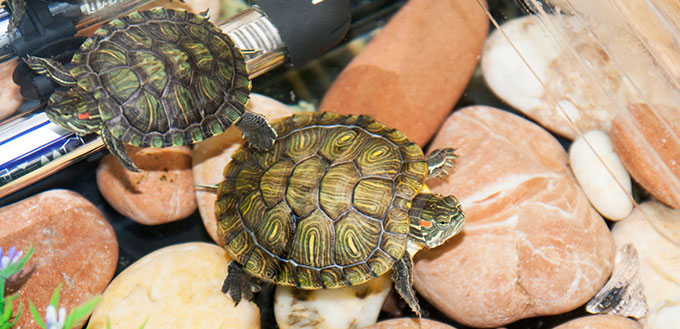
Aquatic Turtles Common Health Problems
When properly cared for, aquatic turtles can live for 25 years or more. With such a long lifespan, it should come as no surprise that your turtle may experience the occasional health issue.
Below, we run through some common issues to watch out for:
- Bladder Stones
Cystic Calculi (bladder stones) are usually triggered by poor diet. If you notice blood in your turtle’s droppings, these stones may well be the culprit. Bladder stones must be surgically removed for your turtle to recover, which can be challenging because of their shell. They are usually diagnosed through a combination of X-rays and physical examination.
- Prolapses
Prolapses occur when an organ protrudes from your turtle’s vent – the underside of the tail from which the animal relieves itself. Organs that can become prolapsed include:
- Intestine
- Cloaca
- Urinary bladder
- Uterus
- Penis
This condition presents itself as a visible protuberance from the vent, usually purple or red in color. Left unchecked, the condition can be life-threatening – consult your vet as soon as possible if you suspect your turtle is experiencing a prolapse.
- MBD
Metabolic Bone Disease (MBD) causes a turtle’s shell to grow irregularly, appearing soft, lumpy, or asymmetrical. The animal may also move differently, and struggle to exit the water. MBD is usually triggered by insufficient calcium levels. When detected early enough, it can be treated through dietary adjustments and supplements.
- Shell Trauma or Fractures
Although turtle shells are generally hard and strong, they can still become damaged through falls and bumps. These injuries will generally heal on their own, but you should visit your vet to rule out additional damage and infections.
- Algae
If a turtle’s tank is dirty, they may develop green algae on their shell. This is fairly easy to spot, and can be treated with a quick bath and more frequent tank cleaning sessions.
- Abnormal Shedding
Healthy turtles will periodically shed pieces of their skin. These pieces appear as white, ‘fuzzy’ detritus in the water. However, excess shedding, along with bleeding, could indicate an infection or vitamin A deficiency. If you notice these symptoms, your vet will be able to ascertain the root cause.
- Dystocia
Also known as ‘egg binding’ dystocia occurs when a female turtle cannot lay her eggs. Egg binding usually occurs when the animal does not have a proper nesting spot. However, it can also be triggered by injury, obstruction, infection, poor diet, and many other factors. Symptoms include lethargy, refusal to eat, restlessness, and attempted digging. Dystocia can be diagnosed via x-ray, abdominal exams, or blood tests.
If you’re ever in doubt about your turtle’s health, speak to a vet as soon as possible.
Sources:
- J. Whitfield Gibbons, Variation in Reproductive Characteristics of Aquatic Turtles, JSTOR
- David H. Bennett, Terrestrial Activity in Aquatic Turtles, Wiley Online Library



